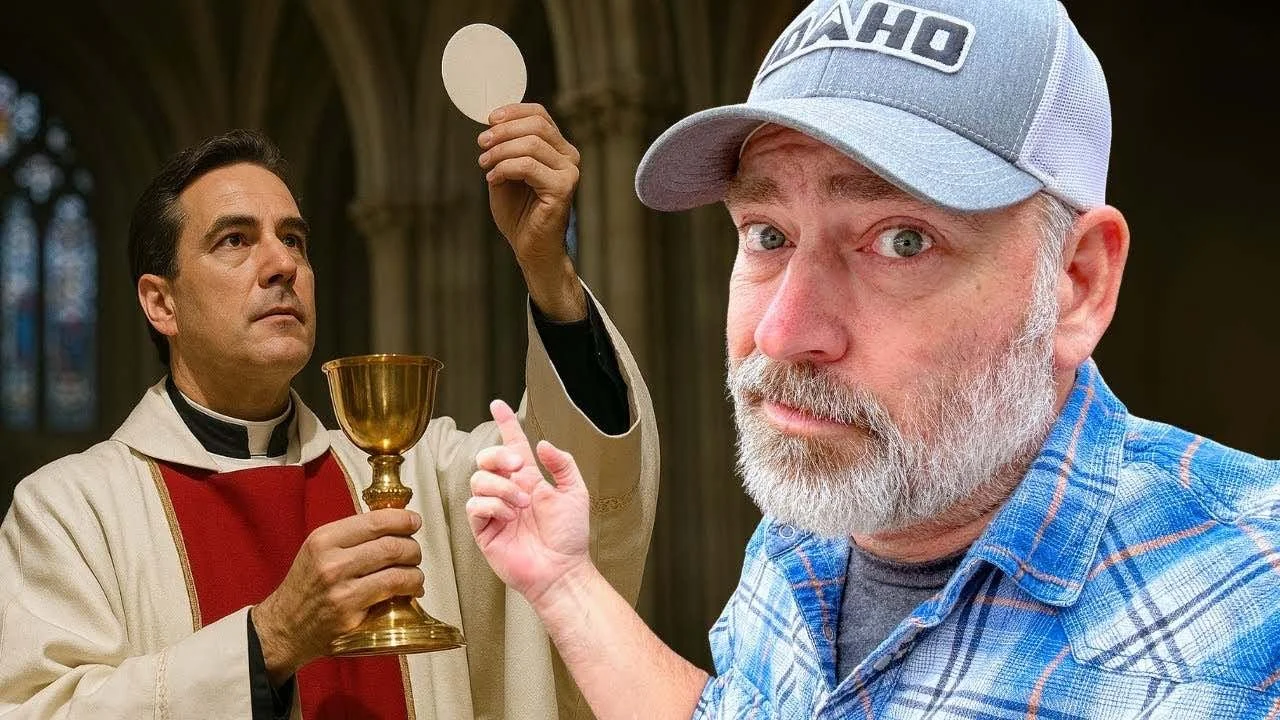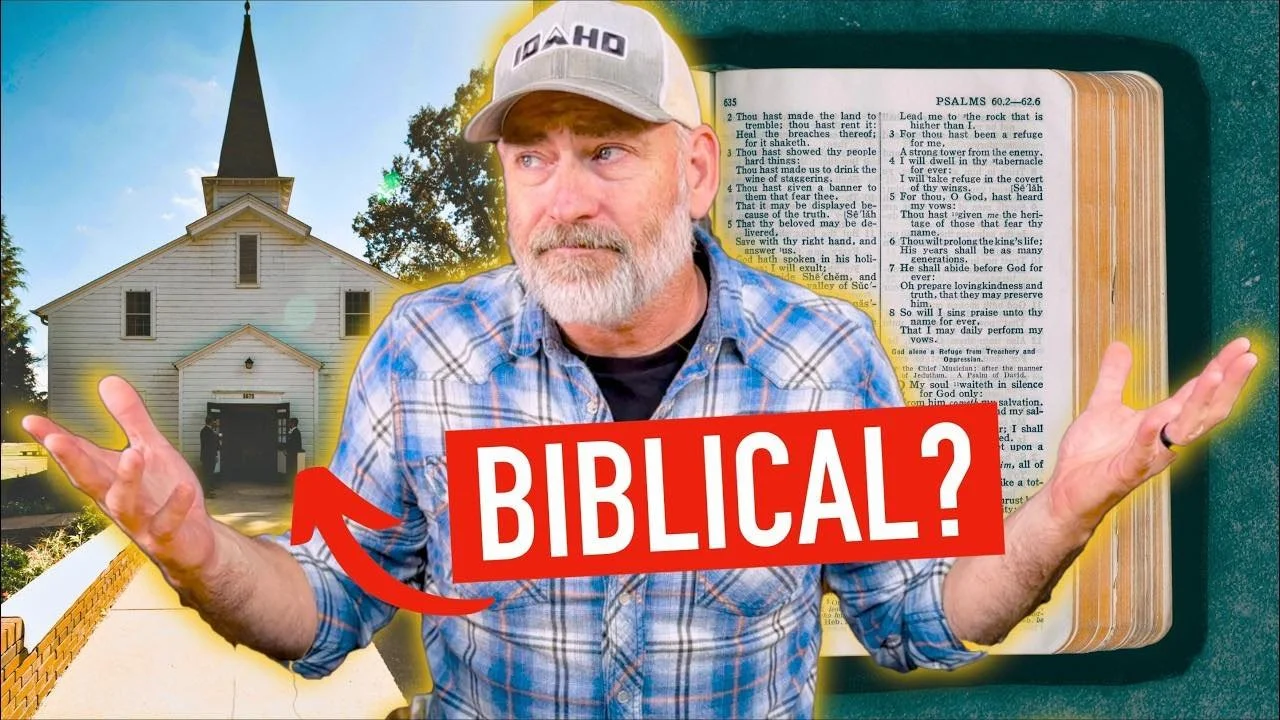Why Are There So Many Churches?
So, you’re looking for a good church to be a part of—but you’re confused by all the different options out there. Let’s see if we can’t clear some things up.
The Religious Landscape: An Aisle of Options
When you look at the religious landscape today, it feels like there are more choices than the cereal aisle at Walmart. One question comes to mind: “Why are there so many different churches?”
We’ve got one Bible, but somehow, hundreds—if not thousands—of different churches around the world. No wonder people have a hard time finding a good church.
One church teaches one thing, another teaches the exact opposite. And here's the reality—both can’t be right. They can both be wrong, but it’s impossible for them to both be right.
If you're reading this, it's likely because you care about the truth of God’s word and getting it right.
What Did Jesus Say About His Church?
Jesus said,
“…I will build my church, and the gates of hell shall not prevail against it” (Matthew 16:18 | ESV)
Did you catch that? He said “my church”—singular, not churches–plural.
Later, the apostle Paul wrote that Christ is the Savior of the church, which is His body (Ephesians 1:22–23; 5:23; Colossians 1:24), and that there is only one body (Ephesians 4:4)—meaning only one church.
So with all these churches today, we have to ask:
Which one is the church Jesus built?
Which one is His body?
Which one will He save?
And how did we get in this mess?
Let’s Take a Walk Through History
Let’s go back to the early church. In the book of Acts, we see Christ’s church begin and spread throughout the Roman Empire:
Jerusalem (Acts 2)
Judea and Samaria (Acts 8:1–25)
Caesarea (Acts 10:1–48)
Antioch (Acts 11:19–26)
Pisidian Antioch (Acts 13:13–52)
Iconium (Acts 14:1–7)
Lystra (Acts 14:8–20)
Derbe (Acts 14:20–21)
Philippi (Acts 16:12–40)
Thessalonica (Acts 17:1–9)
Berea (Acts 17:10–15)
Athens (Acts 17:16–34)
Corinth (Acts 18:1–18)
Ephesus (Acts 18:19–21; 19:1–41)
Troas (Acts 20:5–12)
Crete (Titus)
Rome
And later, places like Smyrna, Pergamum, Thyatira, Sardis, Philadelphia, and Laodicea (Revelation 2–3)
Now, imagine we had a time machine. We visit one of these first-century churches and ask, “What kind of church is this?”
They’d look at us, totally confused. “What do you mean?”
“I mean… is it Methodist? Baptist? Catholic? Episcopal? Lutheran? Reformed? Non-denominational?”
They’d likely respond, “I don’t know what you’re talking about. This is just Christ’s church.”
Then we try again. “Okay, well… what kind of Christian are you? Baptist? Lutheran? Presbyterian?”
“I’m just a Christian.”
And they would be right! Because back then, there was only one church
The church Jesus promised to build
The one He died for
The one He will save
There were no Baptists, Methodists, Catholics or Presbyterians. They were just Christians.
From One Church to Thousands: What Happened?
In short: People disagreed on how to serve God.
Instead of sticking with Scripture and Christ’s church, they broke off and started their own churches.
This was not what God wanted. In 1 Corinthians 1:10, Paul pleaded,
"I appeal to you, brothers, in the name of our Lord Jesus Christ, that all of you agree with one another so that there may be no divisions among you and that you may be perfectly united in mind and thought" (1 Corinthians 1:10 | ESV)
God never wanted all of these divisions, and He certainly never authorized them.
A Quick History of Church Division
Before 100 AD: The New Testament was completed. The Lord’s church was strong and spreading.
Early 300s: Christianity became legal under Emperor Constantine. Bishops began consolidating power over multiple congregations. Soon, religious systems arose that weren’t found in the Bible. Doctrines and traditions were added: the pope, celibacy, indulgences, purgatory, infant baptism, confession, rosary beads, and more. This system became known as the Roman Catholic Church.
Now we have two:
The Lord’s Church
The Roman Catholic Church
1054 AD: A major split over the pope and other disagreements created the Greek Orthodox Church, adding a third.
1500s: The Protestant Reformation began.
Anabaptists rejected infant baptism (among other things), who later gave rise to modern-day Baptists, Amish, and Mennonites.
Martin Luther broke away and started the Lutheran Church.
John Calvin influenced the creation of the Presbyterian Church.
King Henry VIII started the Church of England (the Episcopal Church in the US) because he wanted to be able to divorce his wife. Later, the Methodists and the Salvation Army would split off from the Church of England.
1800s: Joseph Smith claimed to find new scriptures on golden plates and started Mormonism.
And on and on it went—splits, reforms, disagreements—each forming new churches. Until now, we have thousands of churches, all teaching and practicing different things.
This is not what God intended.
Back to the Bible
God only established one church, and we ought to aim to be part of His church, not a man-made substitute.
Many modern denominations claim to be the original church from the Bible. But if they’re all teaching different things… they can’t all be right.
The Bible warns us repeatedly about false teachers and prophets, even when the apostles were still alive nearly 2000 years ago. Imagine how much more prevalent they are today.
That’s why it’s so important to be like the Bereans, who,
“…received the word with all eagerness, examining the Scriptures daily to see if these things were so.” (Acts 17:11 | ESV)
We need to do the same.
What’s Next?
In this blog series, we’ll explore how to recognize Christ’s church today by going straight to the Bible.
We’ll answer questions like:
How was the Church started?
How did the church make decisions?
How did the church refer to itself? Or, what was the name of the church?
What gospel did they preach?
How was the church leadership organized?
How did the church worship God?
If you would like to watch this series on YouTube, you can do so here.







